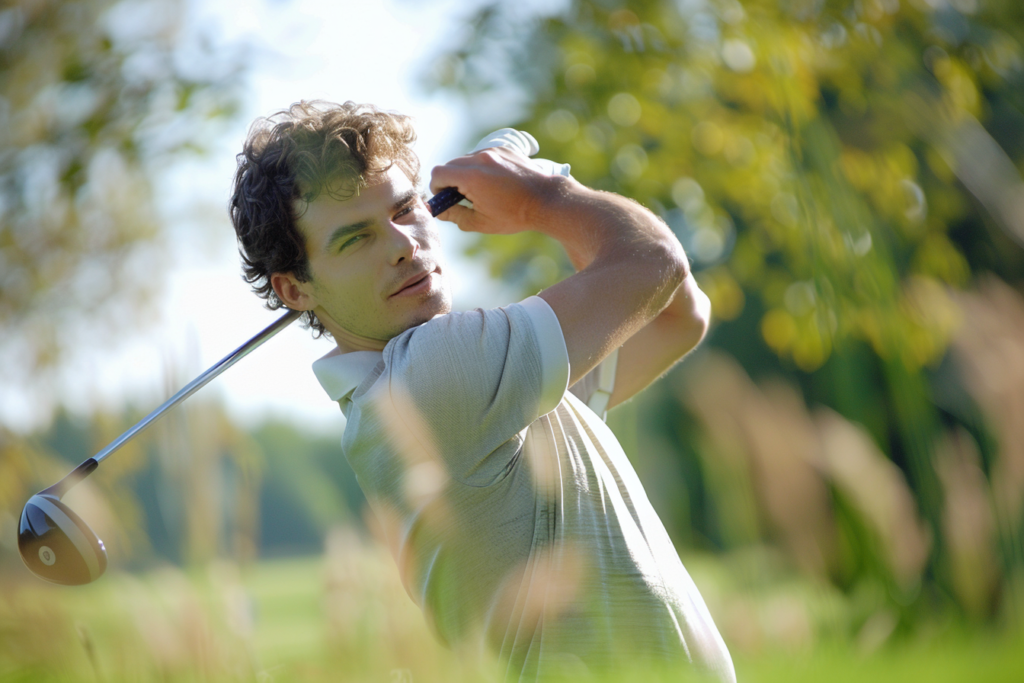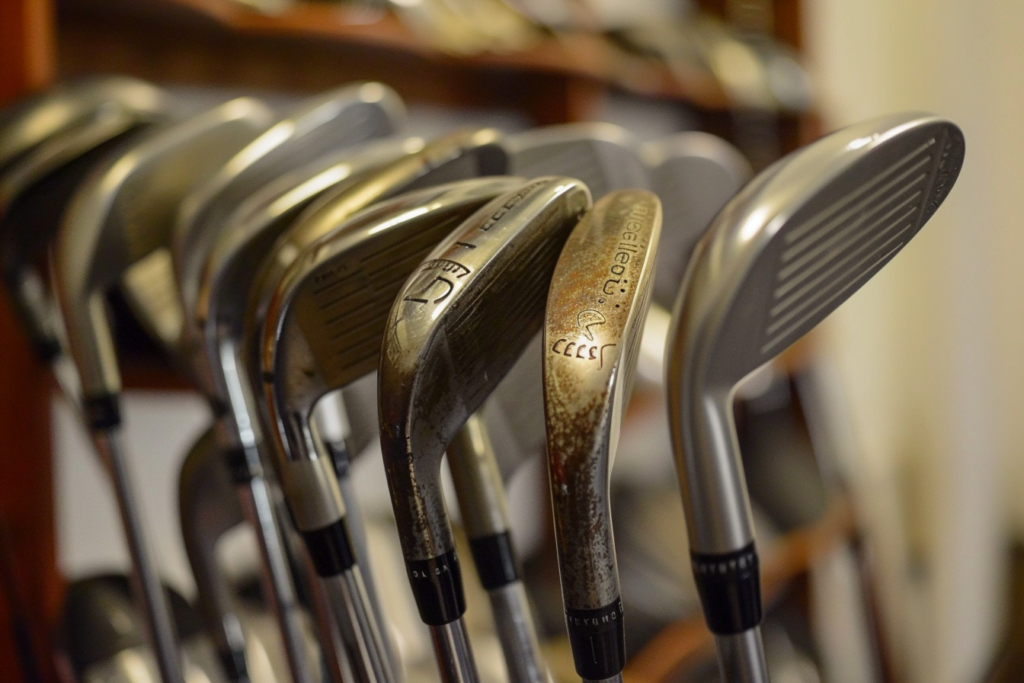
How to stop slicing the golf ball: Slicing the golf ball is a common issue that plagues many players, especially those who are right-handed. It occurs when the ball dramatically curves to the right in flight for a right-handed golfer, and to the left for a left-handed golfer, typically resulting from an open clubface at impact and an outside-to-inside swing path. This mishit can cause considerable frustration on the course as it often leads to lost distance and accuracy, affecting a player’s overall game.
To address this, golfers can implement several corrective techniques aimed at altering grip, stance, and swing mechanics. Strengthening one’s grip can help in squaring the clubface at impact, while adjustments in stance and swing path can promote a more in-to-out motion, setting the stage for a straighter shot.
Table of Contents
Understanding the Slice

A golf slice is a common issue that drastically affects the flight of the ball, veering it significantly to the right for a right-handed golfer, and to the left for a left-handed golfer.
Causes of a Slice
The primary cause of a slice is an open clubface relative to the swing path at the point of contact with the ball. This could be due to several factors, including:
- Grip: A grip that is too weak can prevent the clubface from closing during the swing.
- Swing Path: An outside-to-inside swing path often results in the clubface slicing across the ball.
Effects on Your Game
The effect of a slice on a player’s game can range from a mere inconvenience to a serious handicap. It can result in:
- Lost Distance: A sliced shot often travels less distance than a straight shot due to the energy spent spinning the ball off-course.
- Poor Accuracy: The ball ends up right of the target for a right-handed player, potentially causing trouble on the course.
Fundamentals of Swing Mechanics

Improving one’s golf swing is essential to prevent slicing the ball, and it begins with mastering swing mechanics. Proper grip and hand positioning, stance, and the swing path are pivotal.
Grip and Hand Position
The grip is the golfer’s only connection to the club. For a more reliable swing, hands must be positioned on the club in a manner that promotes a neutral grip—neither too strong nor too weak. Golf Monthly suggests that certain drills, like the split-grip drill, can help in feeling the correct motion through the swing.
Stance and Alignment
A correct stance includes feet, hips, and shoulders aligned parallel to the target line. One’s weight should be evenly distributed or slightly favouring the inside of the back foot to help prevent an outside-to-inside swing path that typically causes a slice.
Swing Path and Plane
The swing path and plane refer to the direction the clubhead moves during the swing and the angle of the club shaft, respectively. An inside-out swing path reduces the chance of slicing. Golfer Logic mentions the importance of the club entering the downswing on an inside path, critical to correcting a slice.
Drills and Exercises

Effective drills and exercises are the cornerstone of correcting a golf slice. The following drills encourage proper swing path and face alignment.
Basket Drill
The ‘Basket Drill’ assists golfers in understanding the correct inward path the club should take during the downswing. By placing a basket or similar object just outside the ball, golfers are forced to take the club more inside on the downswing, promoting a draw instead of a slice.
Tee Drill
The ‘Tee Drill’ helps reinforce an ideal clubface angle at impact. Golfers can place a tee on the outside of the golf ball’s position. By focusing on striking the ball without hitting the tee, players can learn to control the clubface better, to prevent it from opening at the point of impact.
Delayed Wrist Hinge
Incorporating a ‘Delayed Wrist Hinge’ can prevent an open face at impact. Golfers should concentrate on hinging their wrists as they approach the top of their backswing. This encourages the club to take a correct, more closed position relative to the ball at the point of contact, thus reducing the likelihood of a slice.
Equipment Check

When attempting to overcome a golf slice, equipment plays a crucial role. Golfers should ensure they’re using the right clubs and ball position to promote a straighter flight path.
Club Selection
Golfers must ensure their clubs are suited to their swing mechanics. An improper club can exacerbate slicing tendencies. It is advisable to use clubs with the correct loft and a shaft that complements one’s swing speed. A professional fitting might reveal that a player requires clubs with more flex if their swing is slower, or stiffer shafts if they have a faster swing. For many, a regular flex is a practical choice. Consulting with a golf professional or a reputable fitting session can provide personalised advice on choosing the right clubs to minimise slicing. One such piece of advice is to check one’s equipment to ensure it’s not a contributing factor to their slicing.
Ball Type and Position
The correct ball type and its position in relation to one’s stance are fundamental. Players ought to select a ball that provides the right balance between distance and spin control that suits their level of play. As a general rule, positioning the ball slightly forward in the stance can promote a better path through the swing and reduce the chances of an outside-in swing that often leads to a slice. Furthermore, the ball’s placement can encourage a more inside-out swing path, which is desirable for correcting a slice.
Players should always remember that consistency in their equipment choice allows for more reliable results on the course.
Professional Guidance

Seeking expert advice can significantly improve a golfer’s technique to stop slicing the ball. Lessons from certified professionals and utilising online resources offer structured and reliable methods.
Lessons from a Pro
Engaging with a professional golf instructor can provide personalised feedback on one’s swing mechanics. Professionals can identify specific flaws in the golfer’s technique, such as the trail shoulder movement or club path, and offer corrective measures. For example, they might suggest adjustments in the golfer’s grip or stance to promote a straighter ball flight.
Online Resources
A wealth of instructional content is available online, ranging from articles to video tutorials. Golfers can find step-by-step guides on adjusting their swing path and exercises to promote the correct hand rotation and club positioning. It’s crucial for golfers to seek out reputable sites that offer accurate and practical advice to resolve slicing issues.
Frequently Asked Questions
In this section, one will find answers to some commonly asked questions about correcting a golf slice. Each question addresses a specific concern, providing targeted advice for improving your golf game.
How can one correct a sliced shot with a driver?
One can correct a sliced shot with a driver by ensuring a proper grip and adjusting the swing path to be more inside-out. An open clubface at impact is often the main culprit behind a slice.
What quick fixes can amend a slice in golf?
Quick fixes to amend a slice include strengthening the grip, aligning one’s shoulders properly, and making sure the ball position is correct. Practicing a slow-motion swing with an exaggerated outside path on the backswing can help as well.
Why does my golf ball invariably curve to the right?
A golf ball curves to the right primarily due to an open clubface relative to the swing path at the point of impact, causing a sidespin that takes the ball to the right. This is often the result of an incorrect grip or swing path.
What techniques prevent a slice when using irons?
To prevent a slice when using irons, one can focus on keeping the clubface square, maintaining a consistent swing plane, and ensuring a proper weight transfer throughout the swing. It’s also important to keep the swing rotation controlled.
How does one differentiate between a slice and a hook?
A slice is when the ball veers sharply to the right (for a right-handed golfer), while a hook is the opposite, with the ball curving to the left. The slice is caused by an open clubface, whereas a hook usually results from a closed clubface.
Why have my irons begun to slice unexpectedly?
Irons may begin to slice unexpectedly if there has been a change in grip, stance, or swing path without the golfer noticing. It could also be a result of worn grips or equipment unsuited to the golfer’s style of play. Regular practice on the driving range and checking equipment can help identify and correct these issues.

